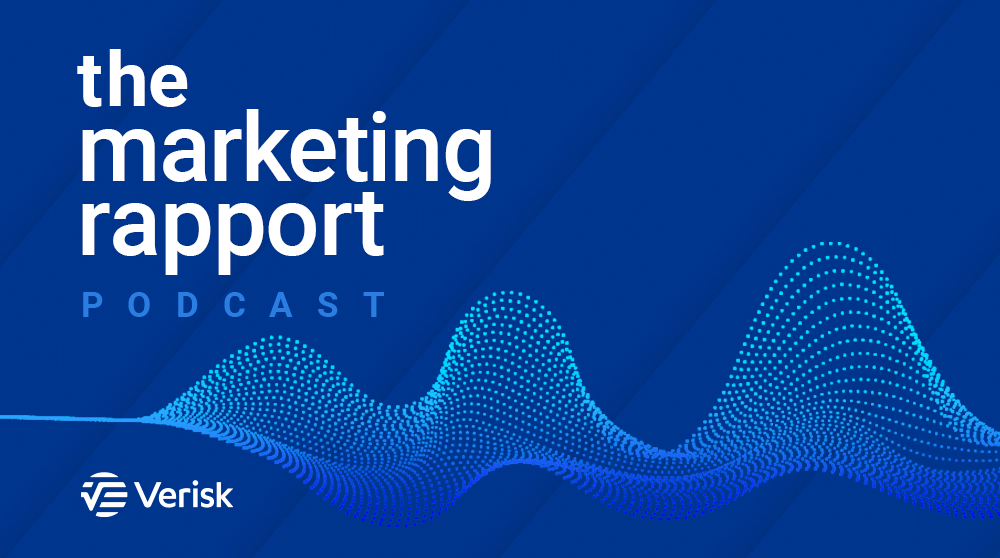The FCC’s 1:1 Consent Rule is Vacated: It’s Time for Our Industry to Refocus on Clear Consumer Consent and Expectations
by Eli Schwarz, Chief Strategy Officer, Verisk Marketing Solutions
Many of us who operate companies in the lead-generation ecosystem experienced a significant feeling of whiplash on Friday, January 24th.
We spent the past year preparing for the FCC’s update to the TCPA regulation which was set to go into effect on Monday, January 27th 2025, and begin requiring that consumers provide consent on a one by one basis for each company that would be following up with them after they filled out a lead form. On Friday, first we heard the news that the FCC had stayed their order for another year, providing a longer period for the industry to prepare for these changes. Then, quickly thereafter, we received word that the 11th Circuit Court had issued a decision in the case that the Insurance Marketing Coalition brought against the FCC, and that the court had vacated the FCC’s 1:1 Consent Order entirely.
On Thursday, I joined Bas Offers (PX) and Michele Shuster (Mac Murray & Shuster) on the final installment of our webinar series to discuss these changes. This was the 7th webinar that our companies have partnered to produce over the past year on this topic as we’ve been hard at work developing technology solutions to support the industry’s ability to comply with the FCC’s 1:1 Consent Order and prepare their websites and lead flows for what would have been a major transformation. Most of the lead generators in our industry have had their entire technology and product roadmaps focused squarely on this issue for months – only to reach the finish line and see the requirement vaporize.
With the 1:1 consent order in the rearview, we’re left facing a few key questions:
- Should we celebrate and welcome the return to the status-quo?
- Did we all waste our time developing solutions for this requirement that no longer exists, or are there learnings and value from the work done over the past year?
- What does the future hold for compliance in the lead generation space, and how do we prepare for the next regulatory action?
In the post below, I’ll lay out thoughts on each of these key questions and share a perspective on how we, as an industry, should refocus our efforts considering the 11th Circuit Court’s decision.
Should we celebrate and welcome the return to status-quo?
It’s important to start here by providing context on Verisk Marketing Solutions (VMS) and our role in the industry. We are a neutral, trusted third party that provides technology solutions to lead sellers and lead buyers to help them verify compliance with the TCPA. As such, we’ve largely stayed away from opining on the pros and cons of the regulation, and instead positioned our technology to help customers comply with whatever regulation becomes the law.
That said – and despite the fact that we have spent the past year building technology to enable 1:1 consent verification – we support the decision to vacate the FCC’s 1:1 Consent Order.
We believe that the original intent of the FCC’s order was positive and directionally a good thing for the industry. Consumers should be given the opportunity to provide clear and conspicuous consent, and they should know who it is they are providing consent to be contacted by. Creating awareness for the consumer as to which brands will contact them, how many brands will contact them, and ensuring clear expectations on the exchange of value that the consumer is agreeing to is a positive improvement for our industry.
However, the 1:1 Consent Order was not positioned to appropriately fulfill this intent. Two major issues stood out from the beginning of this process:
- The requirements were overly specific, restrictive and tried to control the specific website experiences that lead generators use to gather consent. We fully support requiring the collection of clear and conspicuous consent. But mandating exactly how to present consent and how not to present consent to consumers, including in what order of events with a one-by-one brand process? This goes beyond the spirit of why the TCPA regulation exists, and it creates an overreach that is problematic for website owners whose businesses revolve around being able to generate creative consumer experiences.
- The regulation update had real potential to be anti-competitive for small businesses and up and coming brands who are not yet household names. The lead generation marketing channel, and the use of shared leads, has traditionally been a valuable tool for companies to compete with the larger, brand name players in their markets. You don’t have to have a well-known brand to be able to buy a lead and reach consumers – unlike other direct marketing channels where your brand awareness is a key driver in the cost effectiveness of your marketing. With 1:1 consent becoming a requirement, lead-generators were being forced into a situation where they had to place a higher value on matching consumers to well-known brands in order to preserve conversion rates. This had the potential to squeeze smaller brands out of the market and reduce competition for consumers who may otherwise have benefited from having more options, and more service providers competing for their business.
While we’re glad to see the 1:1 requirement removed, we also want to be clear that this should not be taken as invitation to skirt consent altogether. The TCPA regulation remains fully in force, as it was prior to these updates, and it is just as important as ever to ensure that consumers are providing appropriately clear and conspicuous written consent to receive calls and text messages.
A “return to status-quo” should mean a return to clear and conspicuous consumer consent. However, our industry continues to be plagued by bad practices and companies that seek to get around these consent requirements, finding ways to deceive consumers in an effort to sell more leads.
As we look towards the future – this is where we need to refocus and create a new “status-quo” for how the industry operates.
Did we all waste our time developing solutions for this requirement that no longer exists, or are there learnings and value from the work done over the past year?
While it might seem like a lot of wasted effort and resources, I think we’ve learned quite a bit over the past year that will serve our industry well as we move forward.
First, we’ve seen an extraordinary amount of change and resiliency from lead generators and sellers.
Companies that have built their entire business model on shared lead experiences and consent flows were able to transform their products and create new experiences in only a few months’ time. This is a testament to the technological prowess and ability to innovate from lead-generators and sellers. We saw this back in 2013 when the FCC first updated the TCPA regulation to require express written consent and the industry responded with widespread innovation and a new status-quo for consumer consent practices. This time around, we saw similar levels of change and innovation implemented in a short time, and it speaks to the resiliency of this industry that we were prepared to operate in a post 1:1 consent world.
Second, some of the innovations developed during the past year will and should live on, adding value for years to come.
1:1 consent as a legal requirement may be dead, but there are real examples of very successful brand explicit consent gathering lead gen flows that are creating higher quality and higher converting leads. Lead buyers should be willing to pay for higher quality and higher conversion. This is an investment that will fund lead generators’ ability to create ongoing value for them moving forward. PX has shared several great examples if you’re interested in seeing this in practice. Howard Yeh from Healthcare.com also shared his commitment to continuing with 1:1 consent leads moving forward due to the higher quality and conversion they have seen. We applaud these efforts and look forward to seeing performance, rather than the law, as the driving force for 1:1 consent flows.
Finally, it’s important to note that the Centers for Medicare & Medicaid Services (CMS) regulation in Health Insurance requires one to one consent, separately from the TCPA. So, in this industry in particular, the innovations developed during the past year will live on as a requirement, and we will continue to deliver technology solutions to help companies in this space comply.
What does the future hold for compliance in the lead generation space, and how do we prepare for the next regulatory action?
While none of us can predict what regulation may come next, we do have a perspective on where we should be focused as an industry.
We should be aiming to comply with the spirit and intent behind the FCC’s order, even in the absence of needing to comply with the specifics as a matter of law. What does that mean in practice? It means we should be focused on the consumer’s experience and expectations.
Are we creating experiences and lead flows that provide the consumer with clear and conspicuous consent? Or are we tucking consent into the flow as an afterthought, hoping the consumer won’t see it and will simply click the button to convert?
Are we setting expectations with the consumer about what will happen once they submit a form? Do they know they will be matched with 3-5 brands who will then contact them? Do they know who these brands are after they’ve been matched so that they can expect to be contacted? Or are we selling the consumer’s lead ten times over and enabling dozens, or even hundreds of unwanted phone calls placed to that consumer.
If our industry wants to avoid the next round of regulatory action, we need to refocus on creating positive consumer experiences, conspicuous consent, and setting clear expectations for consumers regarding what will happen after they submit a form.
1:1 consent is one specific method of creating this type of clarity for consumers.
There are many other ways to fulfill this mission – and while our industry has plenty of challenges, we’ve also proven to be innovative and capable of change. I look forward to seeing lead generators and lead buyers apply their innovative efforts towards solutions that will improve all of our ability to meet and exceed consumer expectations. If we can focus on respecting the consumer’s wishes and meeting their expectations, it will go a long way towards supporting the longevity of the lead generation industry.









 Your Privacy Choices for Platform Services | Data Services
Your Privacy Choices for Platform Services | Data Services